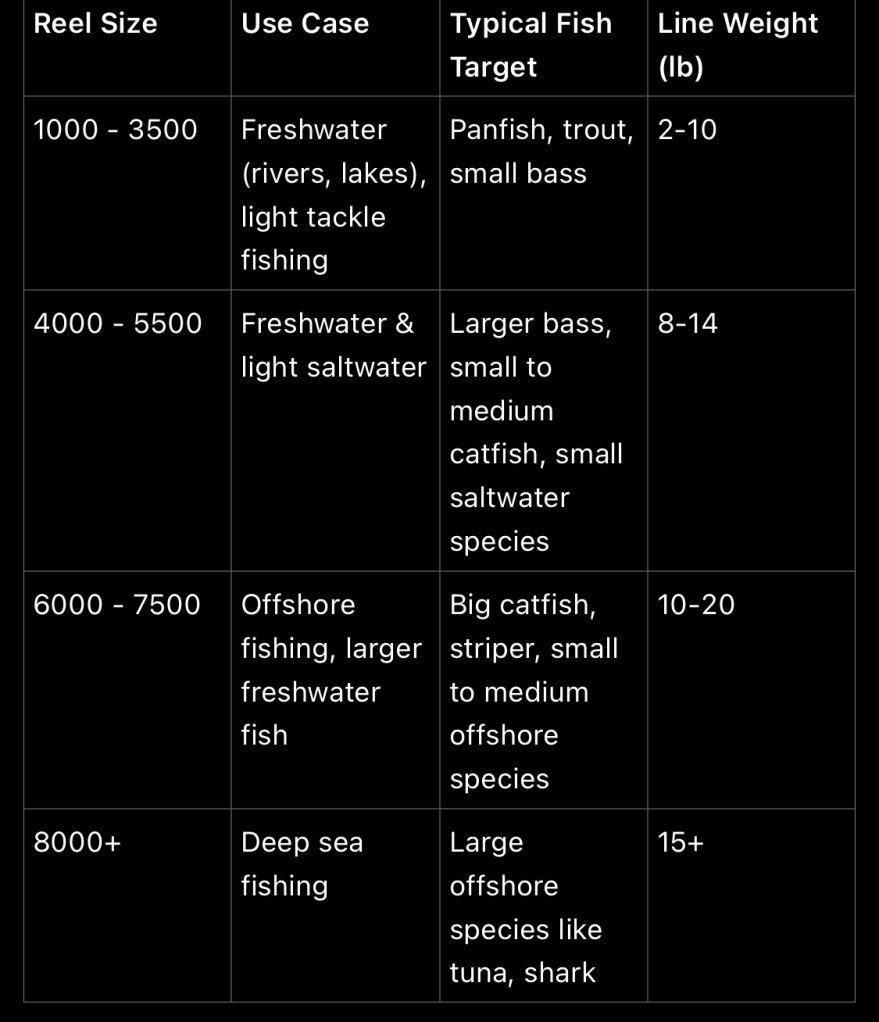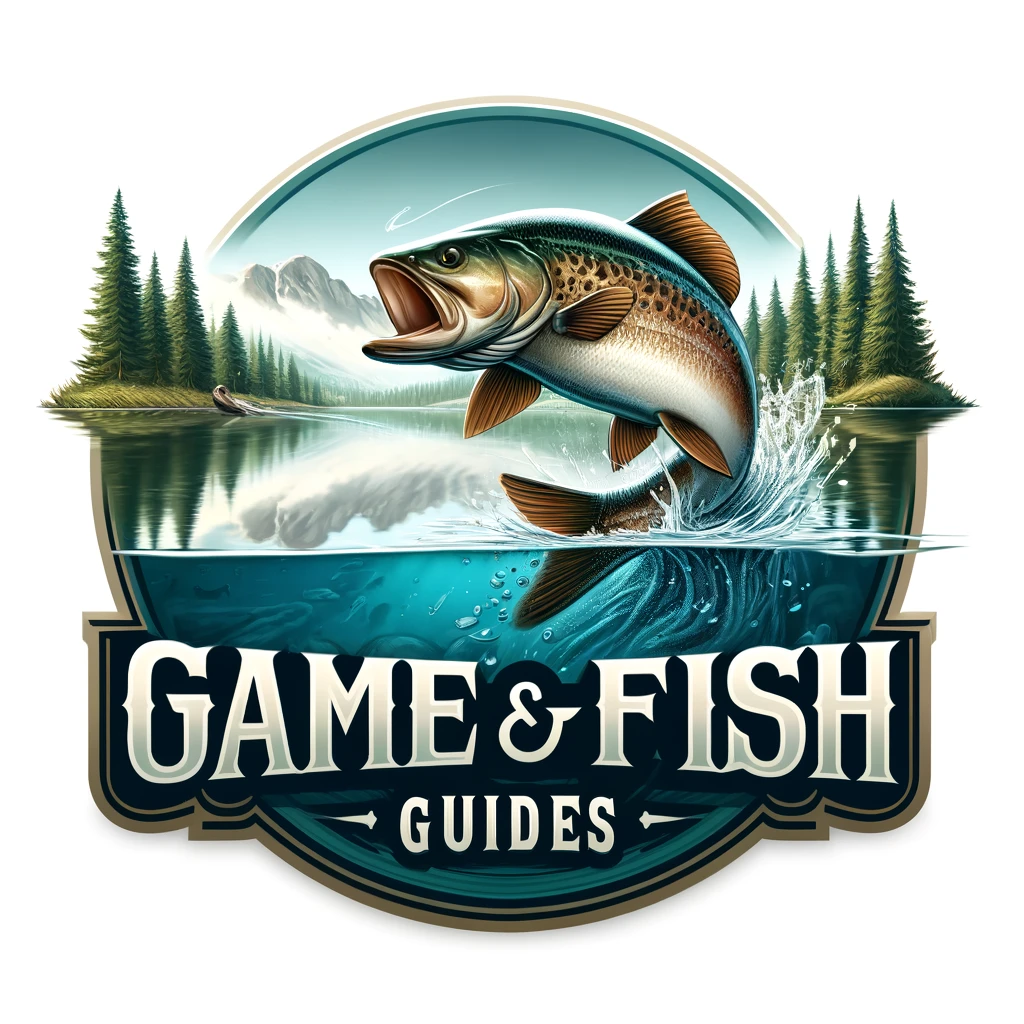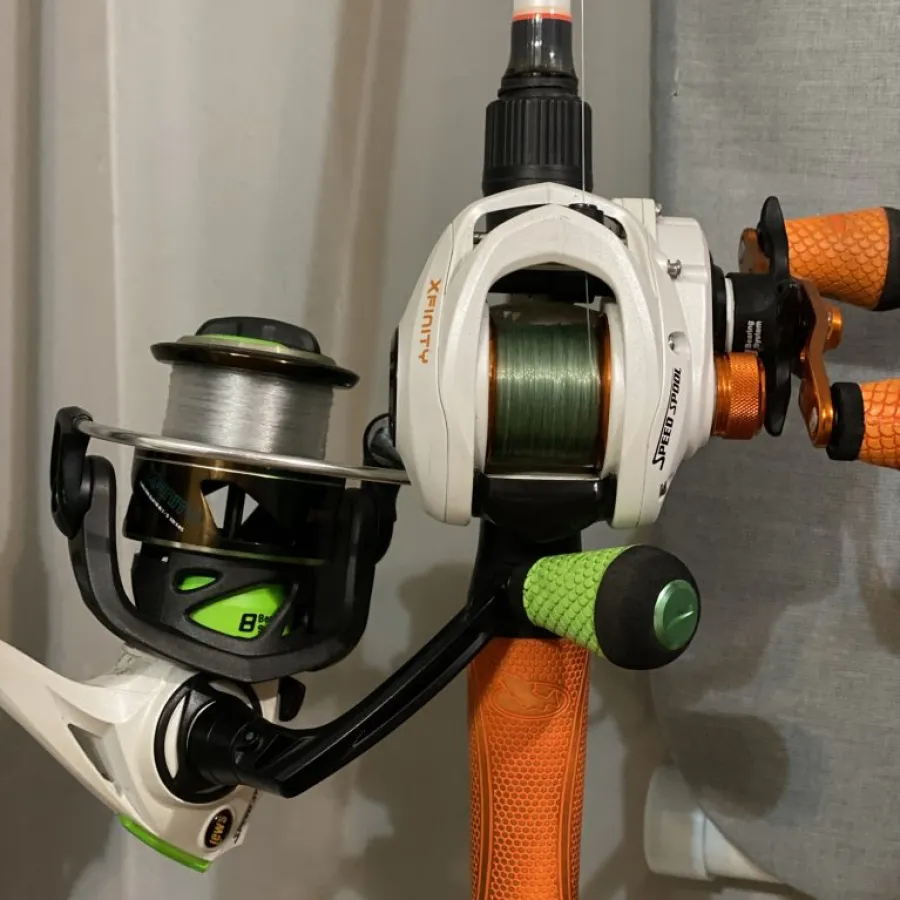This spinning reel guide will teach you all there is to know about the different reel sizes. Learning this is a critical step in understanding the basic types of fishing reels. It’s not just about what fish you’re after but also where and how you plan to catch them.
Different types of fishing calls for different spinning reel sizes. A small reel might be good for trout, while larger species in the ocean need a reel with more strength and line capacity. This guide makes it easy to match your reel size to the environment, technique, and target species. With the right reel, you’ll have better control, more accurate casting, and ultimately, a better overall experience.
Different Reel Sizes Explained: Applications
Picking the right fishing reel size is simple when you know what you’re looking for. Every reel size is specifically made for a certain species or style of fishing. In this section, we’re going to go over the reel sizes, smallest to largest, and expand on each.
Small Reels (1000-2500): For Light Fishing
Small reels are great for targeting smaller fish like trout or panfish in rivers or lakes. They’re lightweight and easy to handle, which makes them great for finesse fishing. These reels work well with low test fishing lines, and give you super smooth casting and retrieval.
Medium Reels (3000-5500): The All-Rounders
If you’re looking for something that works well in many situations, medium-sized reels are a great option. They’re good for catching bass in lakes, and even some smaller saltwater species on the beach. Medium reels can handle slightly thicker lines compared to small-sized reels, so they’re a bit more versatile than light reels, which really can’t handle bigger lines or fish well.
Large Reels (6000-10000): For the Big Catches
When you’re targeting bigger fish, like in the ocean, you’re gonna need a larger reel. These reels are built to hold a lot of line and have the strength to fight large fish like tarpon or other big saltwater species. They’re oftentimes used for deep-sea fishing, or when you’re trying to catch something that puts up a good fight, such as catfish.
Extra-Large Reels (10000+): For the Giants
For the biggest fish out there, like tuna or marlin, you’ll want an extra-large reel. These reels have the highest line capacity and are the most powerful, so you can handle monster fish. They aren’t for everyday fishing, but are necessary when you’re after the largest fish.
Choosing Your Reel

Think about where you’re fishing and what you’re trying to catch. Small reels are good for light finesse fishing, medium reels are more versatile and can be used for both freshwater and light saltwater fishing, large reels are for bigger fish like catfish, and extra-large reels are for the biggest fish out there.
Matching Fishing Reel Sizes with Techniques and Species
Using the right fishing reel size is crucial for your technique and your ability to target specific species. Here’s a walkthrough guide to help you pick:
For Surf Fishing:
- Reel Size: 4500-8000
- Why: These sizes give you the line capacity for long casts and the durability to handle larger species you could potentially hook while surf fishing.
- Target Species: Stripers, sharks, Stingrays, and Bull Redfish.
For Bass Fishing:
- Reel Size: 2500 to 4000
- Why: Good for different bass fishing techniques. Gives you a good balance between weight for casting and strength for reeling in bigger bass.
- Target Species: Largemouth and smallmouth bass.
For Trout Fishing:
- Reel Size: 1000 to 2000
- Why: Lightweight and good for finesse fishing with small lures or baits in streams and rivers.
- Target Species: Trout species such as rainbow, brown, and brook trout.
For Pike Fishing:
- Reel Size: 4000 to 5000
- Why: Gives you the strength and line capacity to handle the size and aggression of pike.
- Target Species: Northern pike and muskellunge.
For Saltwater Game Fishing (Tarpon, Snook):
- Reel Size: 6000 and above
- Why: Necessary for the line capacity and drag strength to fight large saltwater game fish.
- Target Species: Tarpon, snook, and similar large saltwater species.
General Tips:
- Make sure your reel size matches the weight and length of your rod for proper function and performance.
- Pay attention to line size and capacity. Larger reels hold heavier lines and have more line capacity.
Experience Level and Reel Size Selection
Your experience level will play a role in choosing the right fishing reel size. For those just starting, smaller reels are often the best choice. They’re easier to use and can help you get the hang of casting and reeling without the issues that larger reels might give you.
As you gain more experience and confidence, you can then experiment with larger reels. Medium reels (3000-5500) are more versatile and can handle a wider range of use. From bass fishing in lakes to redfish in the surf. They require a bit more skill to use, but not much.
Key Points:
- Beginners: Start with smaller spinning reels to gain basic skills.
- Intermediate Anglers: Move up to medium reels for a lot more versatility in presentations and baits, as well as species of fish.
- Experienced Anglers: Use large or extra-large reels when targeting big fish. These reels are designed for larger species and the battles that come with them.
Compatibility with Rods and Lines
Matching your fishing reel size with the right rod and line type is important for performance and casting.
Rod Compatibility
The size of your reel should match your rod’s length and power. A small reel (1000-2500) goes well with a lighter, shorter rod, like 5-6′. This is ideal for finesse fishing or targeting small species like Bluegill.
As you get to medium reels (3000-5500), you’ll want to get a rod that has a bit more backbone but still maintains flexibility for different casting and retrieval techniques. These setups are suitable for both freshwater bass fishing and inshore saltwater fishing because of the range of lure weights and fishing styles you can use.
Large and extra-large reels (6000 and above) require rods with a lot of strength and durability to handle the heavy lines and lures. Not to mention the fights from larger fish. These combos are typically used in offshore fishing, where the equipment’s ability to handle massive fish is crucial.
Line Considerations
The capacity of your reel directly impacts the type and size of the line you can use. Smaller reels are designed for lighter lines which makes them easier to cast. They work best with line in between 2-10 pounds. They are good fish like trout, panfish, and small bass.
For medium reels, a line range of 8-20 pounds is more appropriate. This gives you a good balance between strength for fighting medium-sized fish, and also the flexibility for various casting and retrieval techniques. This line size range is versatile and covers a wide range of fishing conditions.
When using large reels, you’ll likely be using heavy-duty lines of 20 pounds and above. This is necessary for the challenges of deep-sea fishing or targeting large freshwater fish. These setups can accommodate heavy braided lines as well.
Advantages and Disadvantages Based on Reel Size
When choosing a fishing reel, size does matter, and each size comes with its advantages and disadvantages. Here’s a look at what you can expect from different reel sizes, with a focus on ultra-light reels and the limitations you face with smaller reels.
Ultra-Light Reels (1000-2000)
Advantages:
- Enhanced Sensitivity: Ultra-light reels are good for feeling bites. This makes them excellent for finesse fishing where the ability to feel your bait is crucial.
- Precision Casting: Their small size gives you more precise casting. They’re especially good to use in tight spots or when targeting small fish species.
- Enjoyable Fight: With ultra-light reels, even smaller fish can provide an exciting and enjoyable fight. Which means more fun for you.
Disadvantages:
- Limited Line Capacity: One of the main drawbacks is their limited line capacity.
- Lower Power: They may not have the drag strength or power to handle larger fish, which limits the size of fish that you can handle.
Medium Reels (3000-5000)
Advantages:
- Versatility: Medium reels have a good balance between sensitivity and power, which makes them versatile for both freshwater and saltwater fishing.
- Good Line Capacity: They have good line capacity without being overly bulky, which means they can be used with various styles of fishing and presentations.
- Stronger Drag: Better equipped to handle larger fish than ultra-light reels, with a stronger drag system for controlling fights.
Disadvantages:
- Heavier: They can be heavier than ultra-light reels, which might cause fatigue, especially during a fight.
- Less Precision: While still capable being accurate when casting, the size might reduce accuracy compared to ultra-light reels.
Large Reels (6000 and above)
Advantages:
- High Line Capacity: Large reels are designed for deep-sea fishing and other deep water water fishing, which is why they have a much higher line capacity.
- Powerful Drag: They tend to have much stronger drag systems in order to handle the fights from large saltwater and large freshwater species.
- Durability: Built to withstand a lot of pressure and resistance, and many are designed to handle the corrosive saltwater.
Disadvantages:
- Bulkiness: Their size and weight can make it very tiresome, especially for younger kids or people who aren’t very strong.
FAQs and Common Queries on Reel Size Selection
Q: What reel size do I need for surf fishing?
A: For surf fishing, where you need to be able to cast far out and potentially handle large fish, go with a reel size between 4500-8000. This will give you enough line capacity for long casts and the strength for bigger species.
Q: Which reel size is best for bass fishing?
A: Bass fishing can mean different species, but reel sizes from 2500 to 5000 are usually fine. If you’re targeting smallmouth bass with weightless flukes or worm baits, go with the lighter reel. In contrast, if you’re going for Stripers using live bait or big crankbaits, use a heavier reel.
Q: What reel size should I use for Carp?
A: For carp fishing, especially if you’re targeting bigger ones, a reel size around 4000 to 5000 is recommended. While Carp are fun to catch and can weigh a decent amount, they aren’t the biggest fighters.
Choosing the Right Reel Size: Key to Success
Understanding reel sizes is crucial for your success while fishing. Using the incorrect reel can totally ruin your presentation and your ability to handle big fish. Bass fishing typically needs versatility, which makes medium reels between 2500 to 5000 ideal for various techniques a good choice. For surf fishing, reel sizes from 4500-8000 will give for the power and line capacity needed to cast far out from the shore and the strength to handle big fish. Lastly, deep sea fishing or targeting large freshwater fish, 8000+ is ideal.

